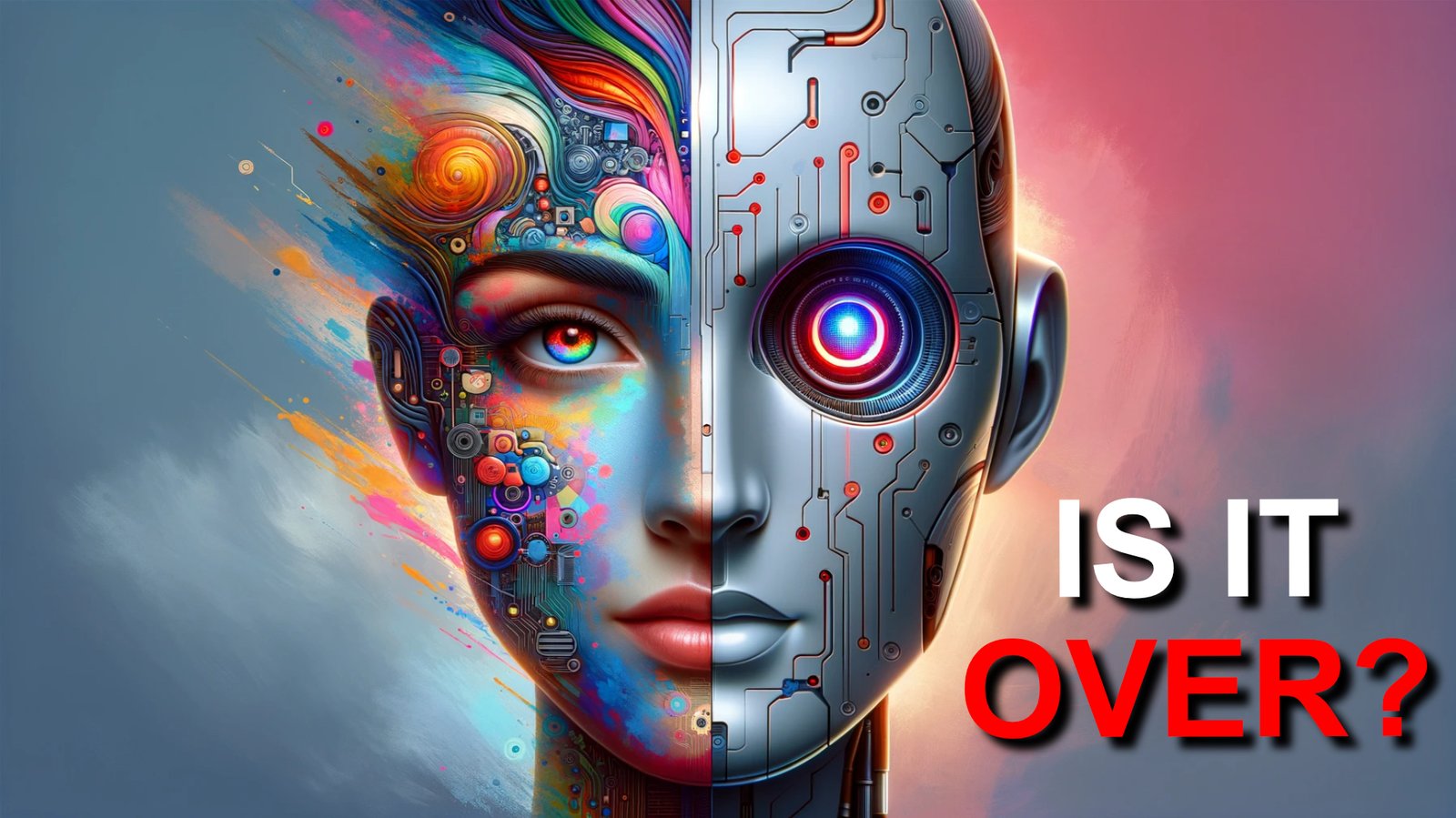It’s a question that haunts the dreams of artists and innovators alike. But to answer this, let’s embark on a journey through time, back before the 1400s, to the era of the storytellers…
Imagine a world where histories and myths breathe through the words of storytellers. They were the keepers of our narratives, the lifeblood of our cultures. These storytellers, with their prodigious memories, carried tales across lands, weaving a tapestry of shared human experience. We had bards and minstrels in Europe, and griots in Africa. Every culture had some form of storytellers. These traditional storytellers were around for centuries and didn’t seem like they were going anywhere.
But then, in the mid-15th century, Johannes Gutenberg revolutionised the world with his printing press. This was not just a new gadget; it was a cultural earthquake. Suddenly, books were not a luxury but a common treasure, spreading knowledge far and wide.
Where previously we would have different variations of the same stories, books allowed for standardisation. There was a dynamic shift in the role of storytellers. Many feared for their livelihoods, but those who were clever used books as sources for more stories. Some adapted to the new technology and began writing, but those who clung to their traditional roles became less central to cultural and social life.
With the press, the role of storytellers transformed. Some feared the end of their tradition, while others saw an ally in books, using them to enrich their tales.
The printing press was crucial in increasing literacy rates, as more people gained access to printed material. This shift changed the nature of storytelling from an oral practice to a written one. Those who adapted thrived, penning their words and reaching audiences vast and unknown.The ease of printing and distributing books led to the development of new genres and themes. Stories were no longer limited to traditional folklore and myths. This also gave rise to a formalised form of written literature. The cross-cultural exchange of stories and ideas made possible by books also impacted the new forms of storytelling.
The printing press didn’t only affect storytelling. Before the press, music was a fleeting art, passed by ear and memory. While there was some form of music notation system before the printing press, it was rudimentary and functioned more as a memory aid. But then, notation evolved, symphonies flourished, and the world of music expanded beyond the imaginable.The printing press made it possible to have a proper notation system, which played a significant role in the development and functioning of large symphony orchestras. Complex compositions would not have been possible without proper notation. Just as traditional storytellers feared the printing press would take their jobs away, so did traditional music teachers, who were valued for their repertoire of memorised music.
Fast forward to the dawn of recorded music in the 20th century—another seismic shift. The live music scene trembled at the thought of audiences preferring the phonograph’s convenience over the concert hall’s vibrancy. Over time, the live music industry adapted to the changing landscape of the music industry and found ways to coexist with recorded music. Live music venues began using recorded music during intermissions.
Yet, as with all great changes, adaptation was key. Recorded music didn’t quench our thirst for live performances; it evolved into a symbiotic relationship, each enhancing the other, pushing the industry to innovate once more.
Musicians and artists started using recorded music to their advantage, helping them build fanbases and increase their reach. It also gave performers who weren’t always great every day, the opportunity to put out music based on their best takes.
Multitrack recording then took the stage, it initially threatened traditional recording engineers and artists who were accustomed to working with single-track recordings. Before multitrack recording, a recording would typically be made by capturing all the instruments and vocals together, which meant that the band or ensemble had to be great performers. Multitrack recording, which enabled recording instruments and vocals separately, gave an opportunity to those musicians and artists who weren’t great live performers to give their best takes without the pressure of getting it right with the band. It also allowed for overdubs, layering, and editing. No longer were single-take performances the norm. Now, artistry could be layered, sculpted, refined. A single musician could play multiple parts of a song, resulting in music that could not have otherwise existed.
Then came synthesizers, sequencers, and samplers. Synthesizers could create new sounds, and samplers could use recordings of existing acoustic instruments. These made it easier for any musician to put together a complete musical piece without engaging any other musician. New genres of music emerged. Many musicians felt threatened by these devices, thinking they might replace them. While some were indeed invented with that intention, fortunately, they did not fulfil that expectation. However, this resulted in new sounds heard in many popular songs.
Digital recording pushed the boundaries even further. Digital recorders and computers allowed for what could not have been easily possible in the analog world. Poor performances could be fixed. Distributing a piece of reusable recording without any loss was possible, giving birth to loops and samples. Reusing old recordings became popular. Anyone with a computer and some loops could make music, and you didn’t have to know much about music to create a musical piece; put together some loops, and voila! You can imagine how this must have made all the musicians and composers who spent years learning their craft feel.
Computer or digital music (including mobile devices) brought music to anyone willing to learn a little. There are top artists today who could not have existed without computers. And same goes for many genres of music.
Technologies were based on existing practices, techniques, devices, and terms. Computer DAWs (Digital Audio Workstations) or recording software were, and to some degrees still are, based on old analog recorders and mixers. Those who kept evolving with technology always had an edge. They knew history; they understood the terms and techniques used.
By now, you can probably see several different patterns that emerge with each new technology or paradigm shift. Firstly, there is a perceived threat to the status quo, leading to fears of job loss. While it’s true that new technologies may take away some jobs away or reduce their numbers, these also create new kinds of jobs, fostering novel genres and styles. Importantly, these technologies lower the barrier to entry. As a result, ideas come to fruition in much less time. Ultimately, those who adapt and evolve with these changes manage to stay relevant in an ever-changing landscape.
Visual arts had similar patterns: photography was a threat to painters and artists, and video was a threat to photographers.
Now let’s talk about AI.
The name is much scarier than it is. It sounds as if it’s some being with emotions and consciousness who will one day break your office door and take over your job. AI is simply a computer system that can perform tasks that typically require human intelligence. There are different kinds of AI systems. These need to have relevant data or information to perform the tasks you ask of them.
I’m sure many of you are aware of Mid Journey, which is an image generation AI. It can create stunning images and is getting better with each version. You give it text prompts, and it creates images for you. It can only create based on what it has learnt. It’s trained on existing images and is limited by the prompts it can recognise.
AI is a technology; it is a tool. It depends on the input it receives. Someone with a relevant background will put it to better use than someone who has no idea about that field. If you go to Mid Journey’s server on Discord and check the images there, you’ll see some amazing images and some very average ones. It becomes very clear by checking the prompts why some are amazing. Prompt-based generative AI depends on the quality of prompts.
Thinking of AI as an assistant machine with human intelligence will help you put it to better use than seeing it as your competition. I find it quite exciting that there’s a machine working for me that is more intelligent and skilled than I am. The thought that I would be able to focus on ideas while AI brings them to life for me can help me realise more ideas in my lifetime than I could otherwise.
AI’s potential to disrupt is clear, but so is its potential to create. The creative jobs it may replace are only one side of the coin. On the other? A realm of artistic possibility, still undefined, still ours to shape. If we take creatives take the lead, we can be the architects of the way forward. It will happen anyway; the question is whether you want to be a part of it.
Human Connection
No matter how amazing machines have become, we have an inner desire to connect with other humans. Sure, we get awed by what machines can do, but that novelty wears off quickly. The desire to connect with other humans is an intrinsic part of us.


Leave a Reply to Tech Gurut Cancel reply